Jutting out into the Aegean, the Bozburun Peninsula has managed to remain relatively secluded despite its proximity to the wild tourism of Marmaris. With a southern half characterized by dry, rocky scrubland instantaneously giving way to shady pine forest as you make your way towards mainland Anatolia, the peninsula offers a variety of ways to gaze out onto views of the winding coastline. These days, several of the peninsula’s glistening bays are filled with lavish yachts, but this is more than just a place to indulge your taste buds and empty your wallet. Since ancient times, the peninsula has been a land of villages and still retains an archaic feel with its stone-paved roman roads, ancient agricultural methods, countless ruins, and timeless traditions. A land of contrast, you’ll hear the chugging of fishing boats and see the sleek view of yachts, greet villagers transporting home-grown wheat on the backs of their donkeys and smile at well-dressed Istanbul socialites, feel the heat of the barren hills of the south and the refreshing breeze through the northern pines all in the time between your morning and afternoon swims.
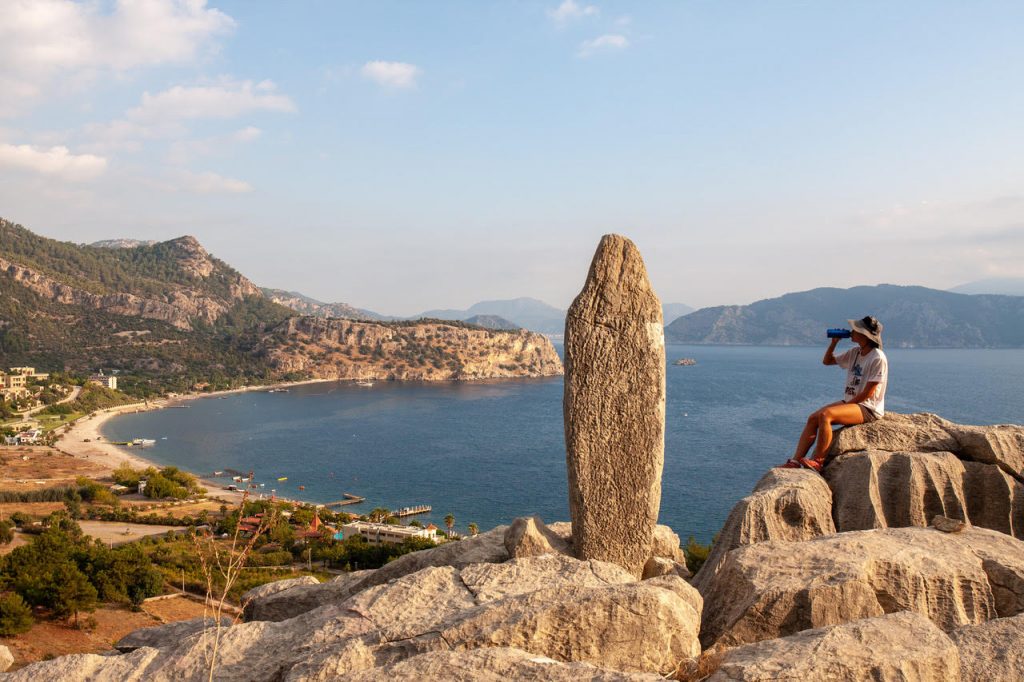
Kumlubük
One of my favorite beaches on the peninsula, Kumlubük’s lengthy stretch of sand looks out to the stunning, hilly landscape across the bay. Serving as the harbor for the city of Amos in ancient times, the area was used for agriculture back when flat, beachy areas were too dangerous to permanently settle in. Located south of Marmaris, past İçmeler and Turunç, it’s still managed to stay relatively off the radar of big groups of beach-going folks on holiday, meaning more sparkling sand and clean water and less plastic beach chair madness. In addition to getting crispy-burnt tanning on the beach, it’s definitely worth the short walk up to the ruins of Amos, if not for the ancient tombs, 2-meter thick city walls, and scenic theatre, then at least for the beautiful view from the top. Just walk north along the beach and follow the red and white waymarks up the hill. As the year-round population is actually zero, there are no markets or stores here, and most of the hotels and restaurants are only open during the summer season (only ‘Maris Hotel’ is open year round).
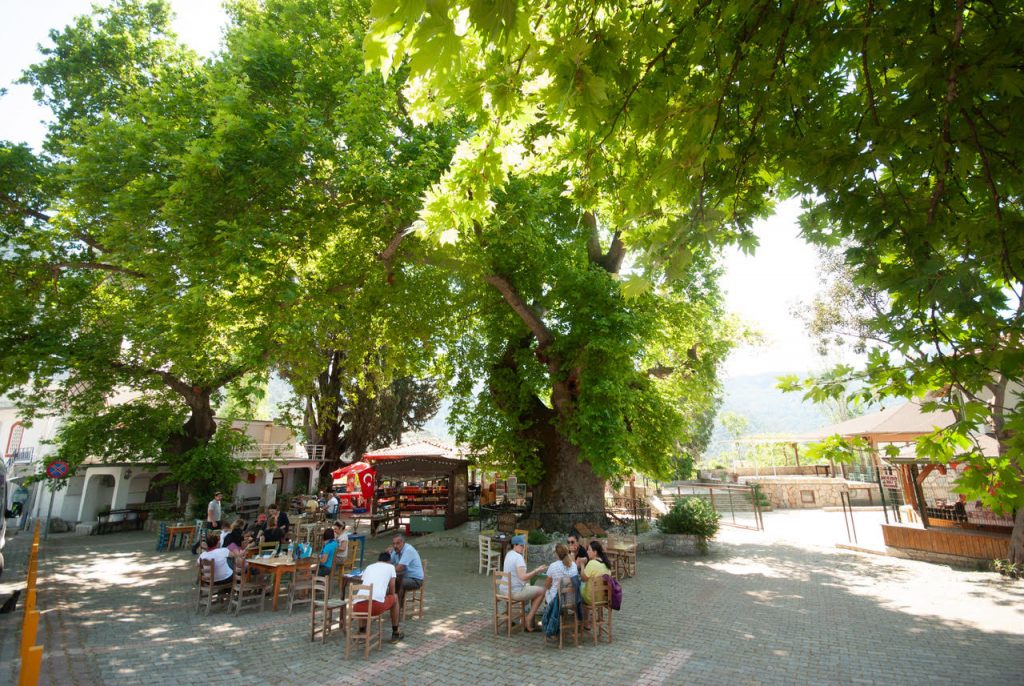
Bayır
The sound of rushing springs and every shade of the color green mark your arrival to the village of Bayır. On the same peninsula as entire villages without running water, in a dry, yellow landscape made up of mostly thorny scrub, this lush oasis seems otherworldly. As to be expected, this abundance of water has facilitated the extreme growth of the two 30 meter tall trees shading the village’s teahouse. A toasted sandwich at the teahouse and a look at the shops is a must before visiting the local olive oil press turned museum located in the village square. Bayır’s name comes from the older, Panayır, meaning street market or fair. As the veritable intersection of the peninsula, you’ll understand why this is the perfect location for the weekly market that used to take place here, as you pass through Bayır daily while traveling from place to place. Unfortunately, there is no accommodation or any restaurants outside of the simple fair offered at the teahouse. Full disclosure: I have a secret dream of opening a campsite/ homey café in this very village… it just feels that much like home.
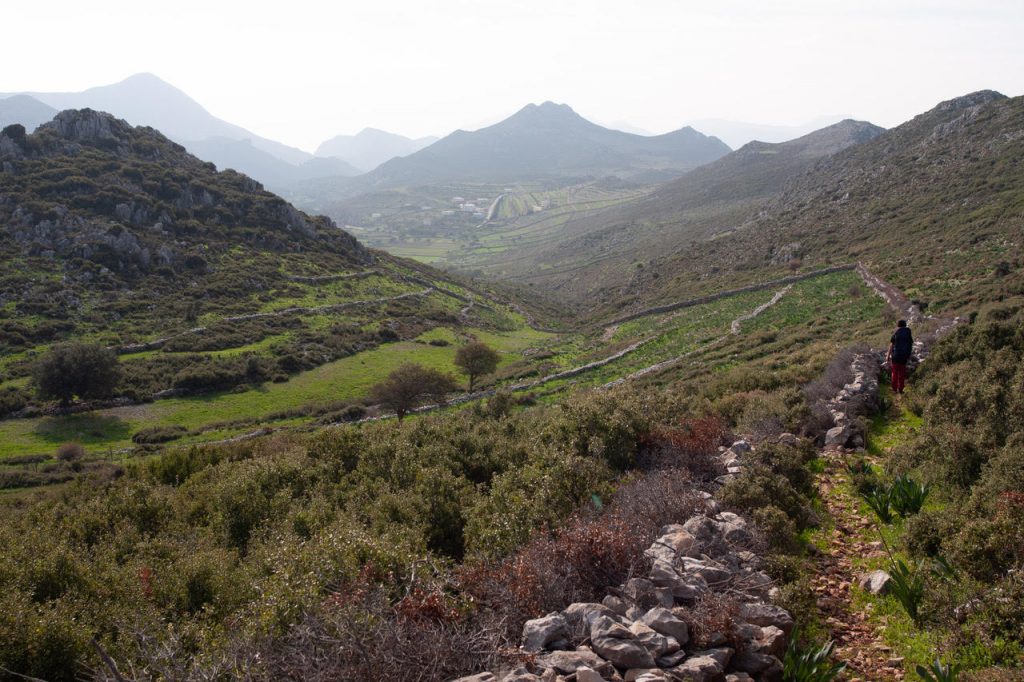
Taşlıca
As the southernmost village on the peninsula, the land beyond Taşlıca is home to little more than the occasional passing shepherd or fisherman, and of course loads of ancient ruins. The village itself is constructed almost entirely out of the abundant stones that cover the arid landscape. The streets, garden walls, borders, and houses are all made of the same grey stone. Since today’s vacationers feel the need to be less than 5 meters from the sea at all times, hilltop villages like Taşlıca are more authentic and untouched than those on the coast. Until very recently, the village completely lacked running water. Every drop of water used had to be collected in cisterns during the rainy season; even today you’ll see a cistern outside every home. Despite the geographical hardships, locals manage to harvest wheat, olives, and figs, along with raising animals and fishing, this provides just enough prosperity to keep the friendly villagers smiling. There are a couple markets, a teahouse and a new guesthouse (I guess just a room in a house) where you can stay. Don’t miss the crazy coastal view as you head back north (best seen at sunset), you can also camp at this viewpoint just a kilometer or two from the village.
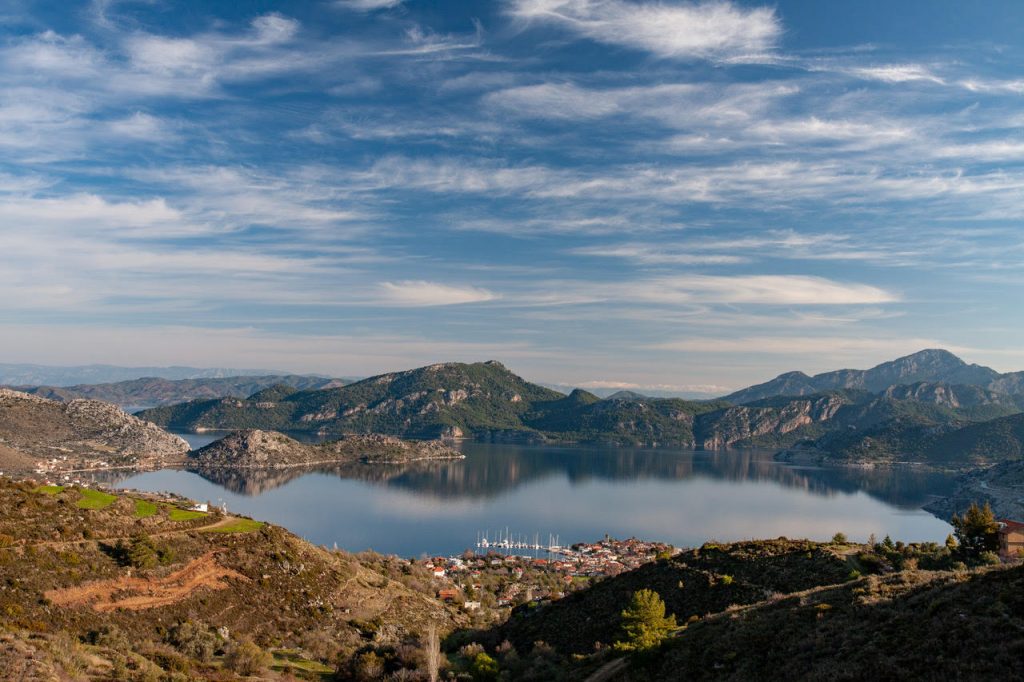
Selimiye
If Taşlıca is a hardworking but happy old man, then Selimiye is your rich, cool cousin. The best-known settlement on the peninsula, Selimiye exploded in popularity after the building of the road in the 90s. The area known as ‘Yukarı Mahalle’ or ‘Upper District’ on the hillside is still home to locals and their free-pecking chicken filled gardens. The coast, however, now boasts classy seafood restaurants, boutique hotels, and chic cafes. Popular with yacht owners, scenic Selimiye caters more to those wanting peace, quiet, and relaxation. Even in summer, you won’t find any bars or cafes blasting music; in winter the only sound throughout the bay is that of the fishing boats chugging along. Accommodation options abound here, as well as restaurants and multiple markets open all year. No visit to Selimiye is complete without a visit to the castle, photographing (or even swimming too) the Byzantine period watchtower now in the water, visiting the ruins of the Byzantine monastery (the floor mosaics are amazing) on Kameriye Island with a boat tour, and at the very least, a swim in the smooth, waveless sea, feeling like the socialite you are.
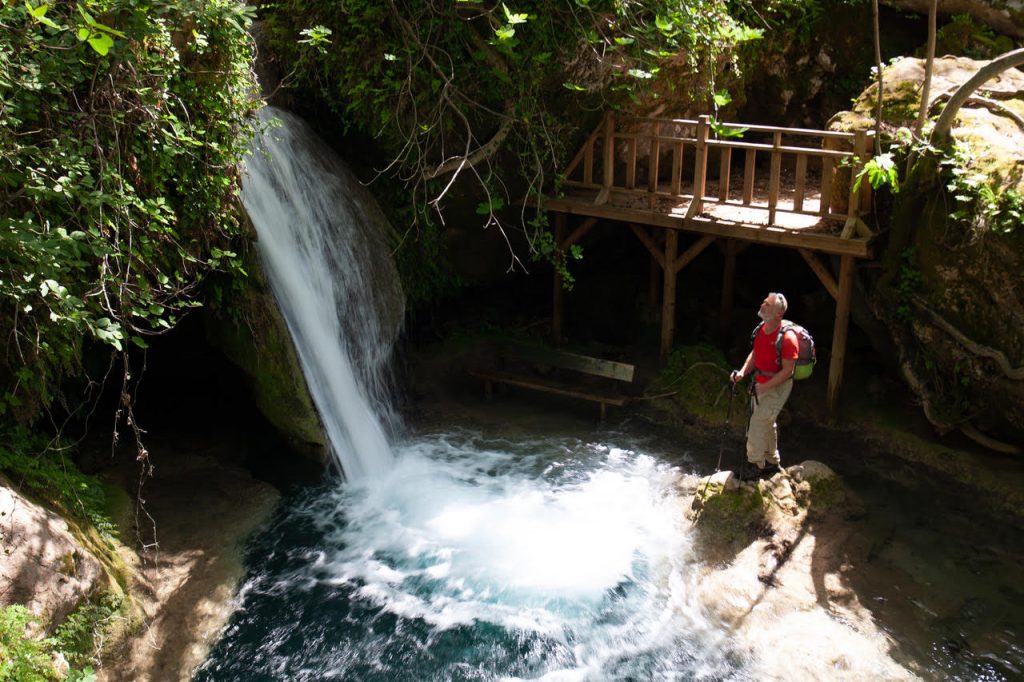
Turgut
It’s not the village of Turgut itself, but the sights that surround it that stand out in my mind. One of the streams originating near Bayır flows past Turgut, creating a unique type of ecosystem all its own before emptying into the sea. With its sweetgum and sycamore trees, cypresses, orchids, colorful flowers and the jersey tiger butterflies that feed off of them, the waterfall holds a special place in the ecology of the peninsula. This waterfall stands so small (5m) that it almost can be stripped of its title when compared to the great waterfalls of the world, but since it provides relief from the relentless summer heat, there’s always a steady stream of visitors. On the opposite side of the village stands a strange stone building above the road. It was later learned that this is actually the tomb of the soldier Diagoras and his wife who lived during the 3rd century BCE, but for years (probably even centuries) the local villagers would visit the supposed ‘entombed saint’ for cures to illness, marriage issues, and other problems. After treasure hunters’ raids, the villagers discovered that this tomb belonged to not to an Islamic saint, but an infidel and these traditional prayers ceased. The tomb of Diagoras itself, the only of its kind in Turkey, is still perched on the hillside overlooking the village.
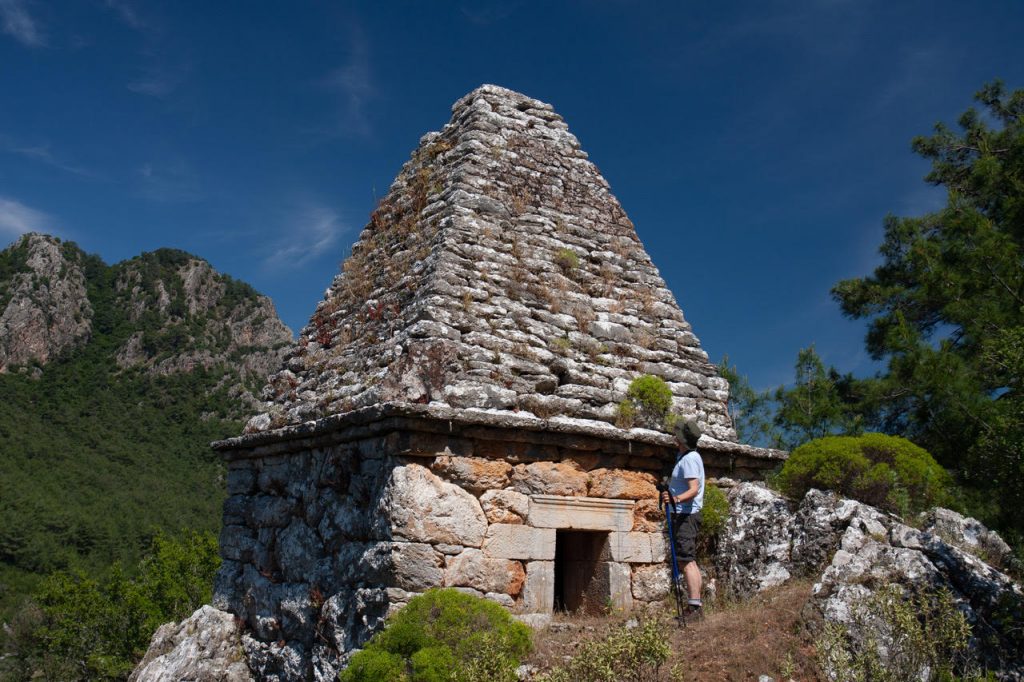
From lush forests to barren hills, traditional villages to extravagant yachts, Bozburun offers a whole lot of variety packed into a tiny little lump sticking out into the sea. Numerous ancient cities, rich culinary traditions, beautiful photographic opportunities, and 150 kilometers of marked hiking routes mean that there seriously is something for everyone on this oft-forgotten peninsula. As the weather cools and the crowds recede, I can’t think of a better place to visit.









